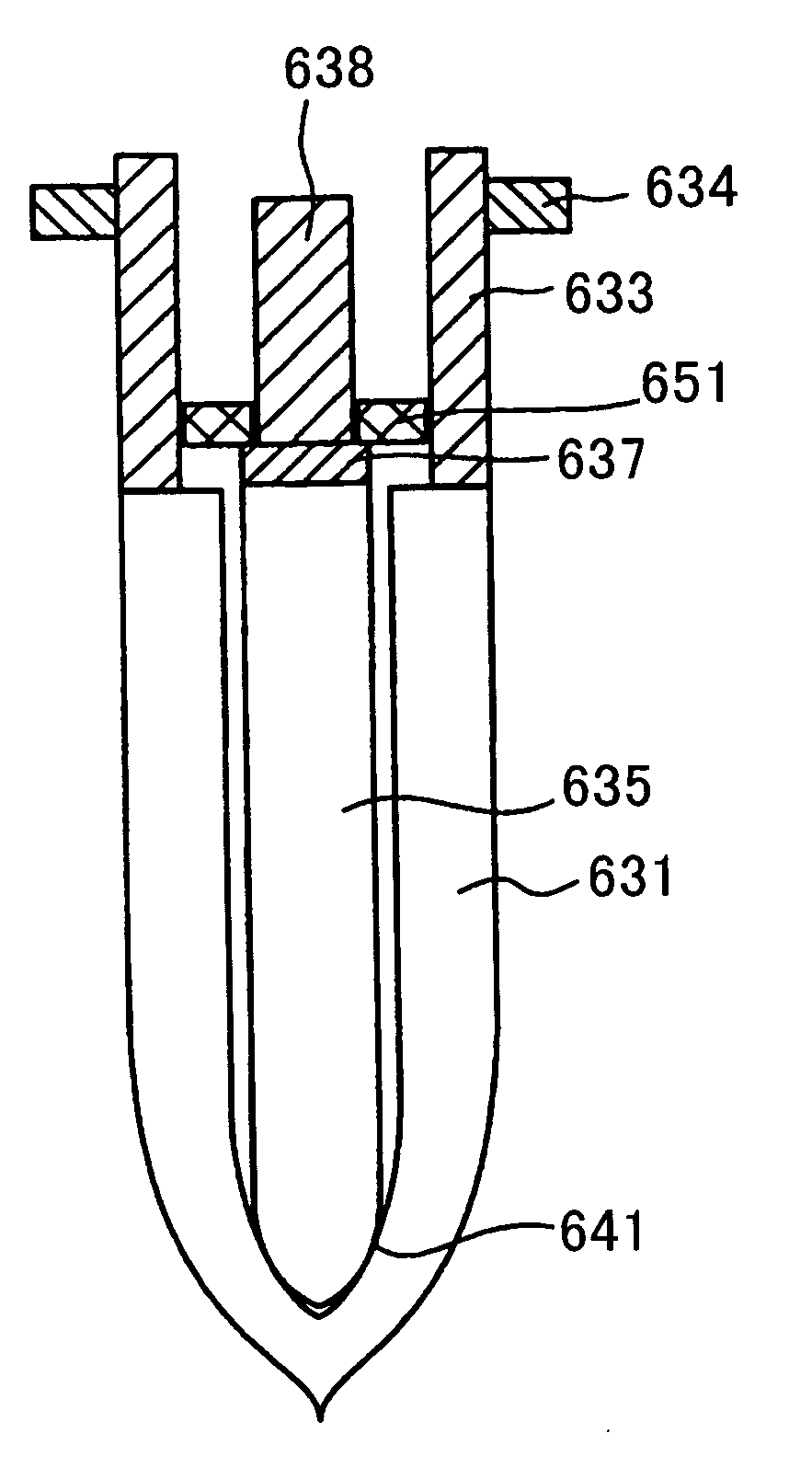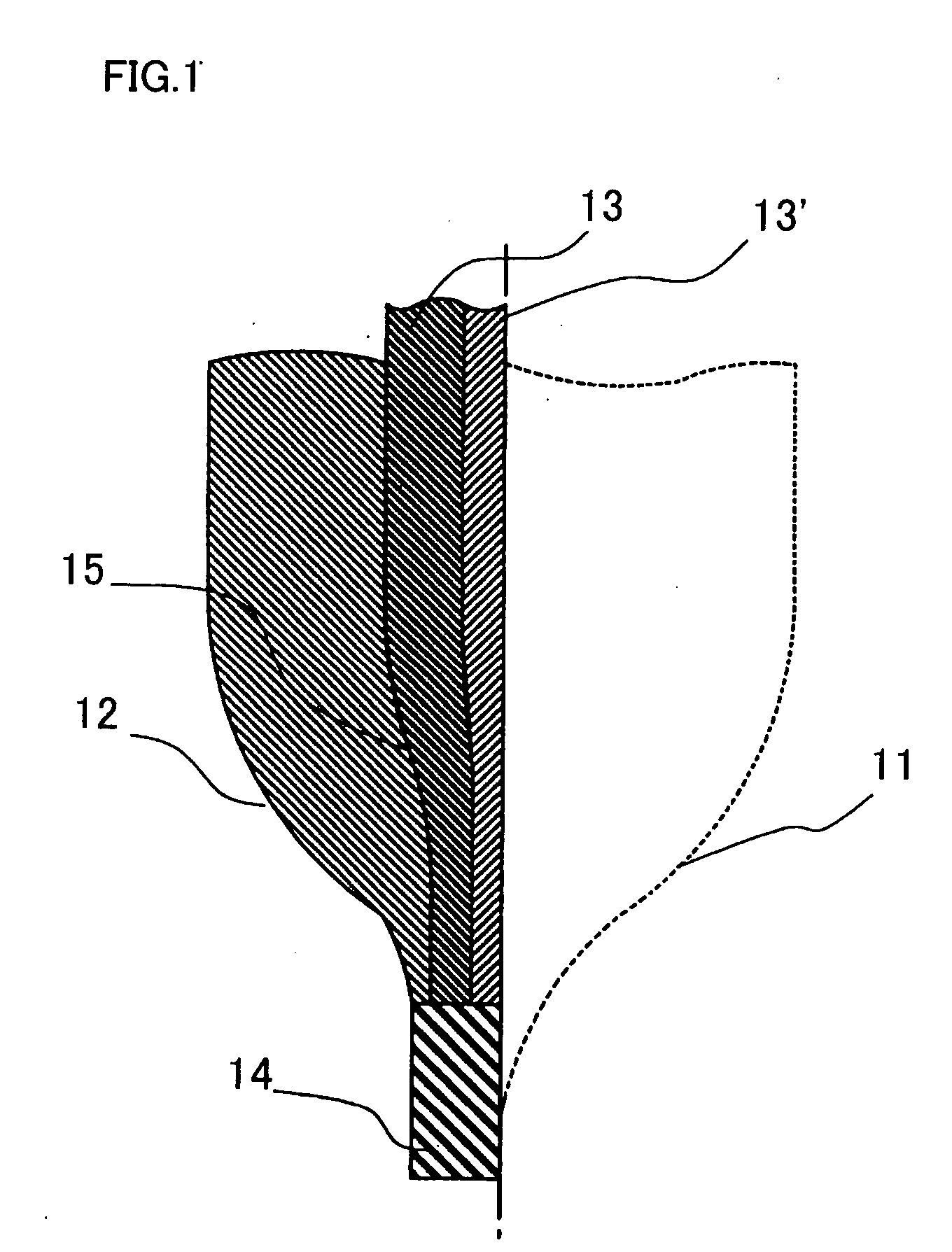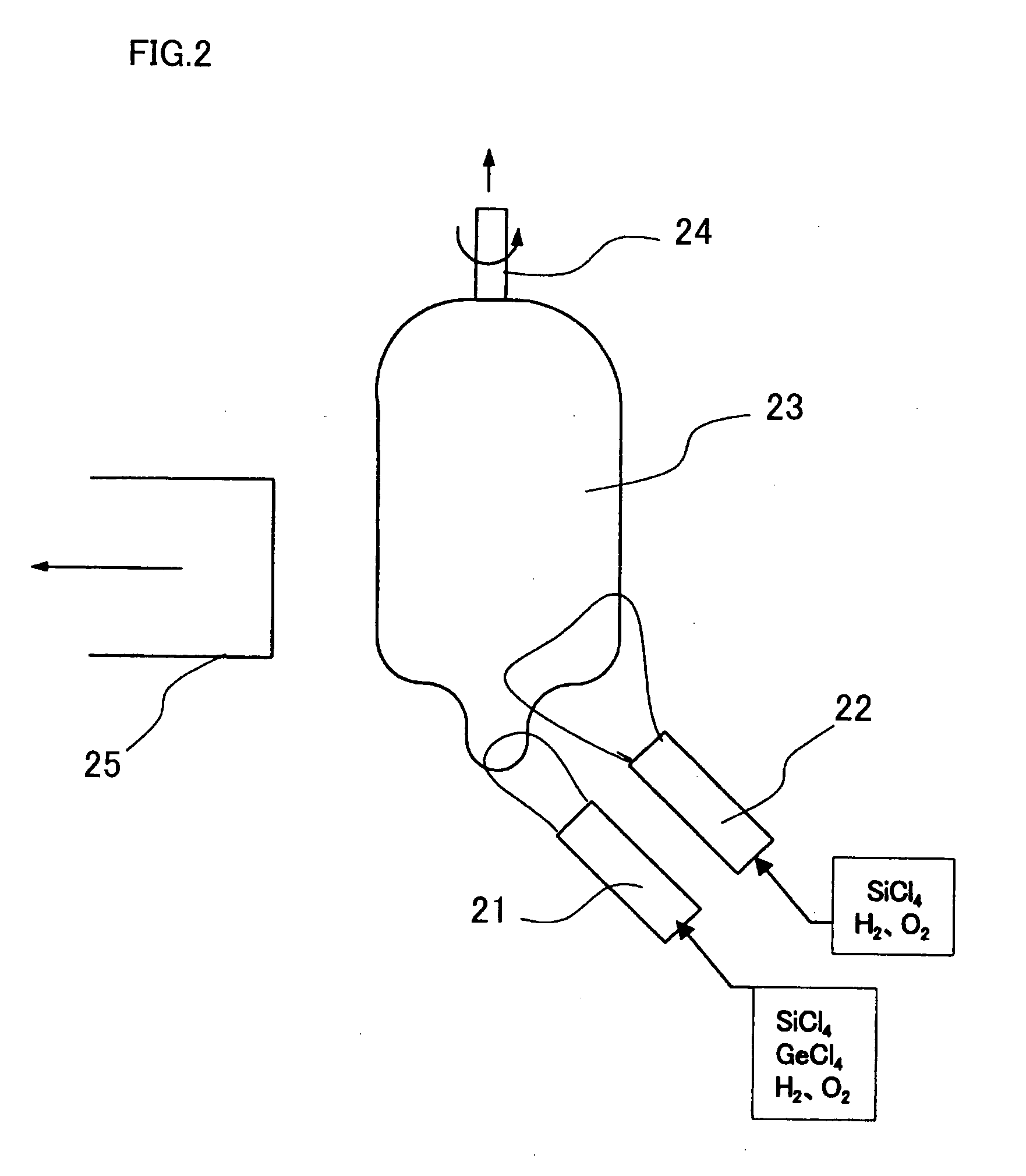Method for manufacturing optical fiber
a manufacturing method and optical fiber technology, applied in the direction of glass making apparatus, manufacturing tools, instruments, etc., can solve the problems of increasing the risk of preform damage by accident, contaminated preform, unstable drawing condition, etc., and achieve the effect of reducing pressur
- Summary
- Abstract
- Description
- Claims
- Application Information
AI Technical Summary
Benefits of technology
Problems solved by technology
Method used
Image
Examples
example 1
[0175] As shown in FIG. 2, VAD consists of discharging vaporized silicon tetrachloride and germanium tetrachloride together with oxygen and hydrogen via a core-preparing burner 21 consisting of a multiple pipe structure, igniting the gas mixture to burn to allow thereby a hydrolysis reaction to occur in the resulting flame, producing particulate synthetic silica glass, and depositing the particles onto a seed rod 24 to obtain a porous core soot 23. To obtain a preform stable in characteristics, an additional burner 22 is provided above the core burner 21 which discharges silicon tetrachloride and oxygen / hydrogen to allow the gas mixture to react, and deposit the particulate synthetic silica glass onto the core soot to provide a part of the cladding layer around it. The particulate synthetic silica glass is heated to around 1500 to 1600° C. to produce a transparent glass body. With regard to a single-mode optical fiber, its core / cladding ratio is about 1:13. It is difficult according...
example 2
[0184] As in Example 1, a supporting tube 83 was attached by welding to an inert end of a jacketing tube 82 whose drawn end has been tapered, and the jacketing tube 82 was attached to a processing lathe by means of the supporting tube 83 whose distal end is held by a chuck of the lathe as shown in FIG. 8A. To a drawn end of a core-rod 81 which was processed in advance to have a specified dimension, a supporting rod 84 was attached as in Example 1, and the core-rod 81 was similarly attached to the lathe. The core-rod 81 was then inserted into the jacketing tube 82. The chucks of the lathe were rotated as in Example 1, and the tip of the glass assembly was exposed to oxygen / hydrogen flame of the burner so that the drawn ends of the jacketing tube 82 and core-rod 81 were melted to be sealed. Then, a glass assembly incorporating the core-rod and jacketing tube whose tip was collapsed as shown in FIG. 8B was obtained. The glass assembly was then transferred to a fiber-drawing equipment w...
example 3
[0185] According to the method of Example 2, as shown in FIG. 29, a drawn end of a jacketing tube 82 has a straight inner surface while a drawn end of a core-rod 81 has a taper when the two ends are welded together just before the onset of fiber-drawing. Therefore, if the core-rod 81 and jacketing tube 82 are displaced longitudinally with respect to each other, the two drawn ends could not be successfully welded, because then the clearance between the two ends may be too large. To meet such situation, as shown in FIG. 9, a rod was prepared which had, on one end, a recess whose surface had a tapered profile, and this was called a jacketing tube sealing rod 95. Then, the rod 95 was placed with respect to the glass assembly such that the recess was positioned practically at the same level with the drawn ends of the core-rod 81 and jacketing tube 82 in a longitudinal direction. Except for this, the glass assembly was treated as in Example 2 to produce a preform of an optical fiber. FIG....
PUM
| Property | Measurement | Unit |
|---|---|---|
| Fraction | aaaaa | aaaaa |
| Current | aaaaa | aaaaa |
| Nanoscale particle size | aaaaa | aaaaa |
Abstract
Description
Claims
Application Information
 Login to View More
Login to View More - R&D
- Intellectual Property
- Life Sciences
- Materials
- Tech Scout
- Unparalleled Data Quality
- Higher Quality Content
- 60% Fewer Hallucinations
Browse by: Latest US Patents, China's latest patents, Technical Efficacy Thesaurus, Application Domain, Technology Topic, Popular Technical Reports.
© 2025 PatSnap. All rights reserved.Legal|Privacy policy|Modern Slavery Act Transparency Statement|Sitemap|About US| Contact US: help@patsnap.com



